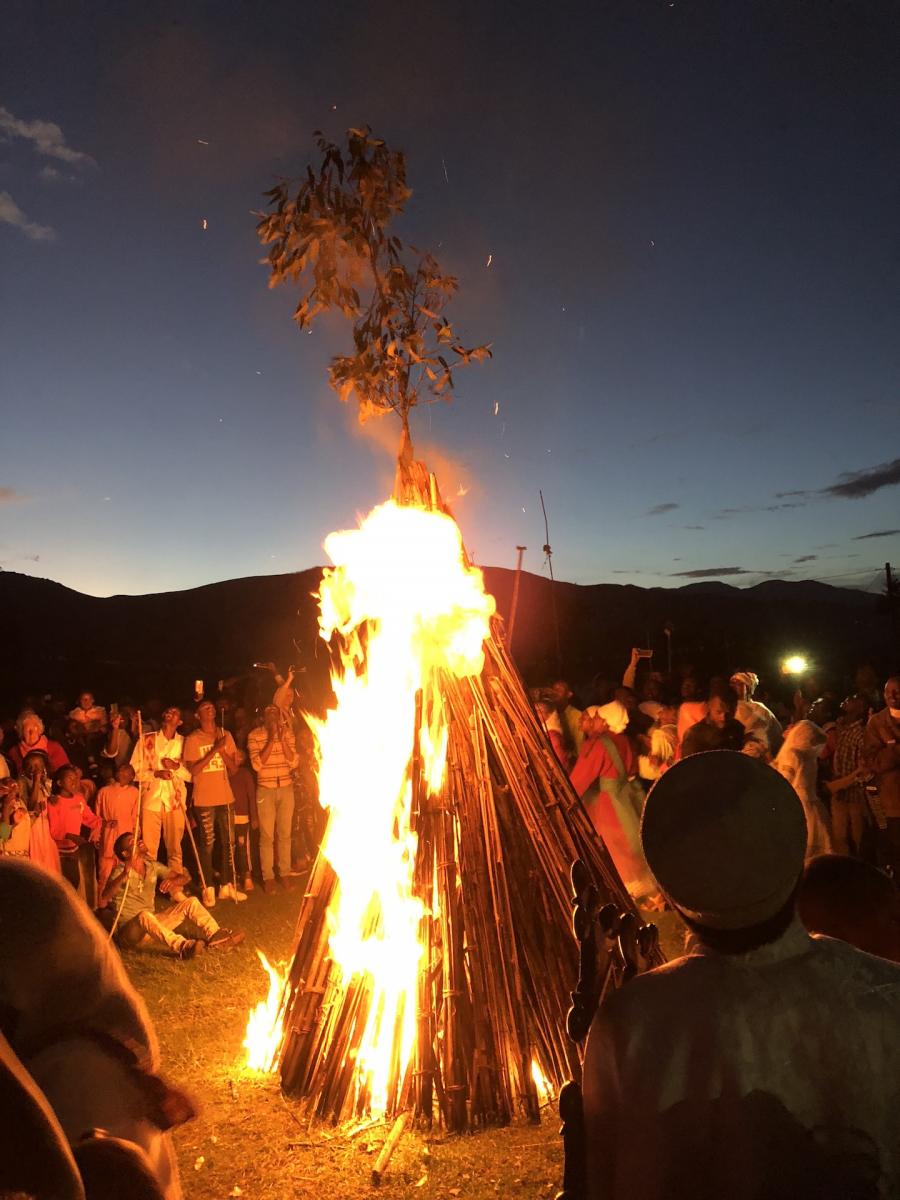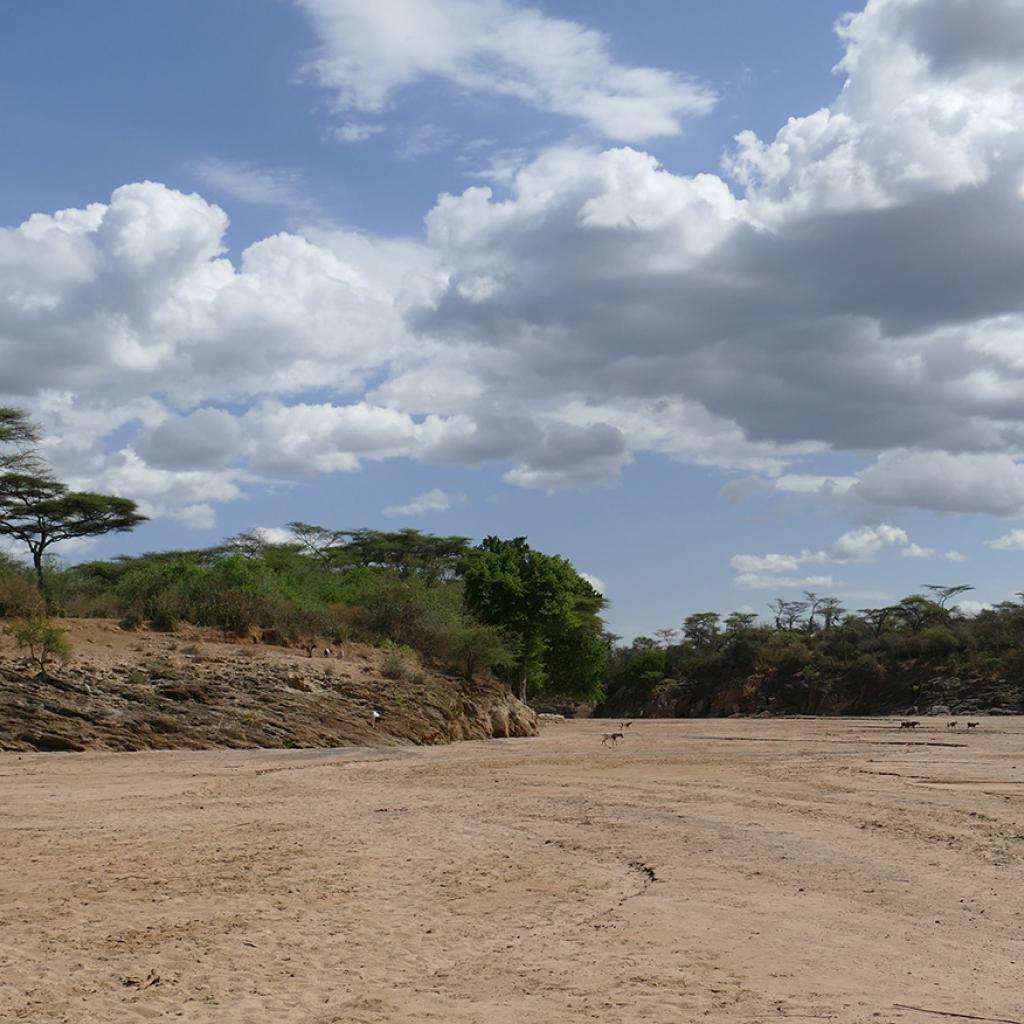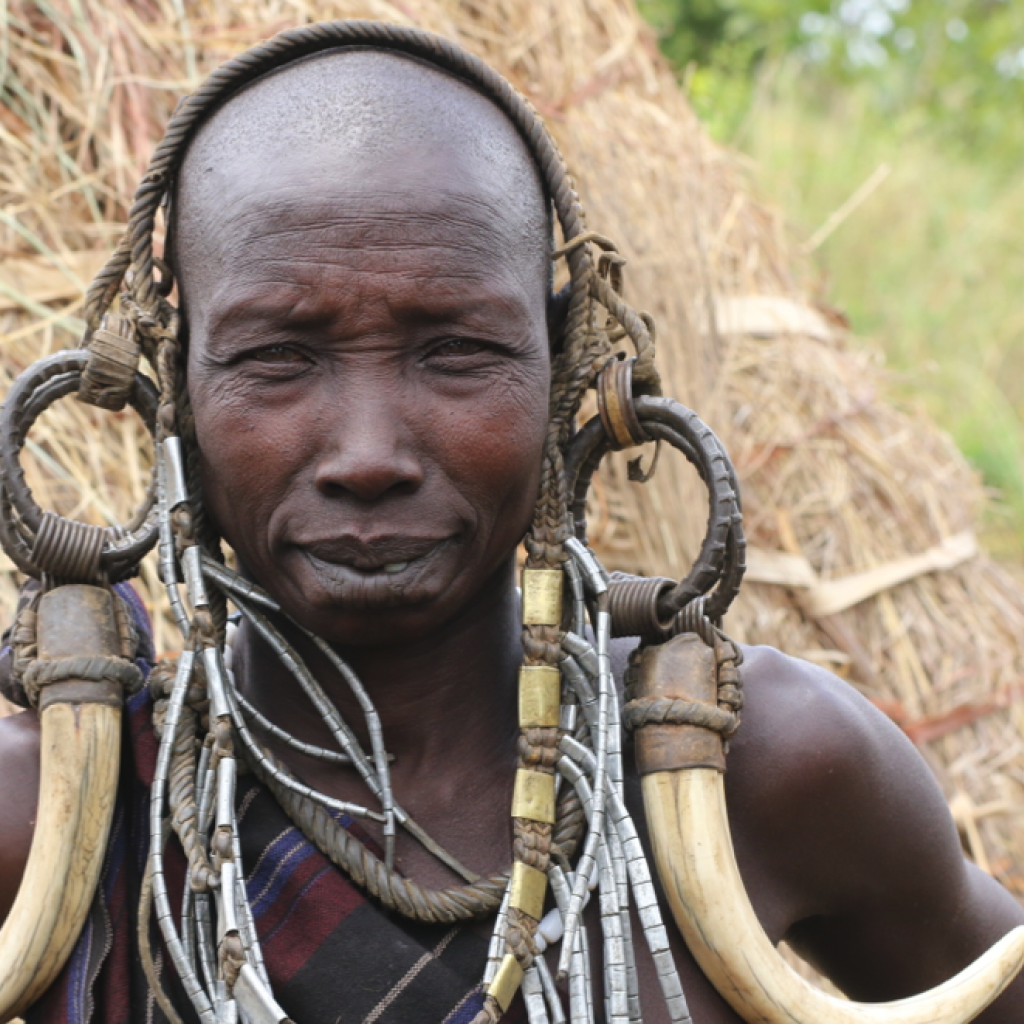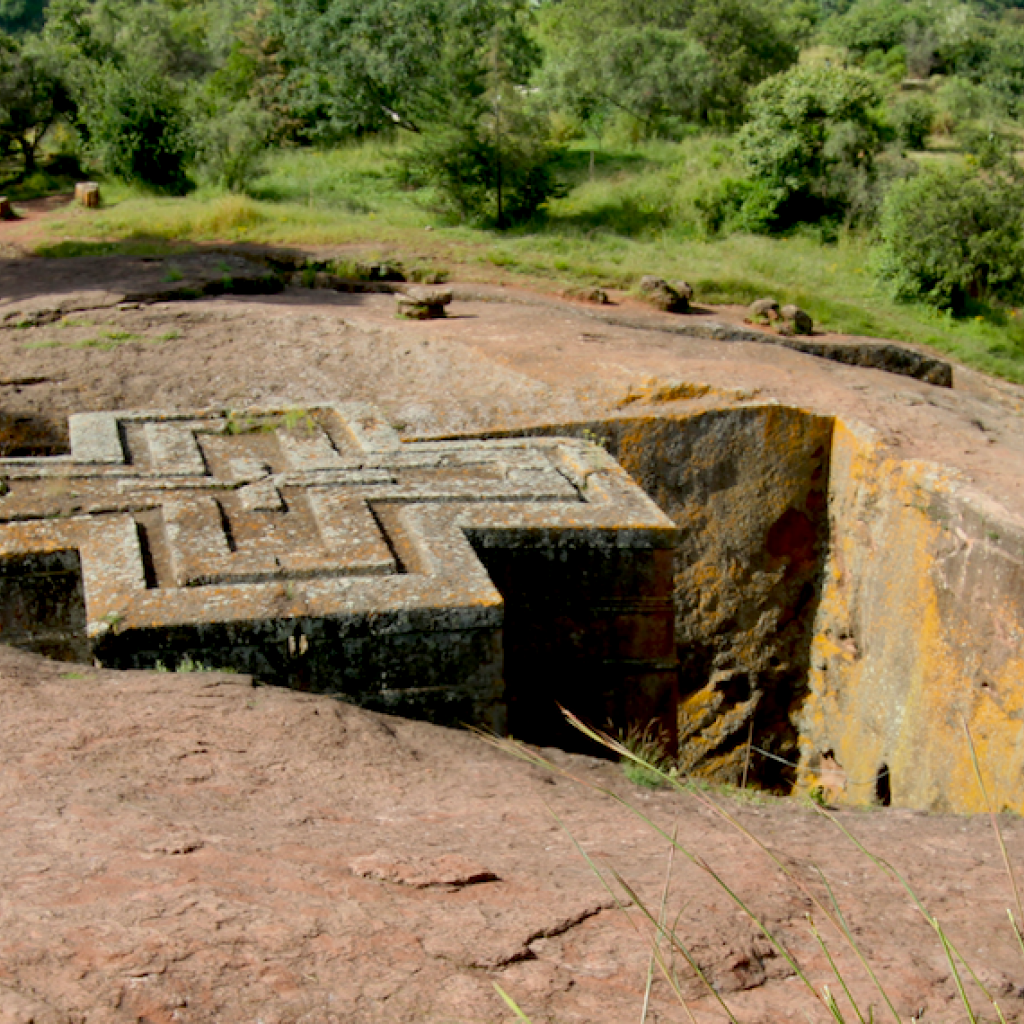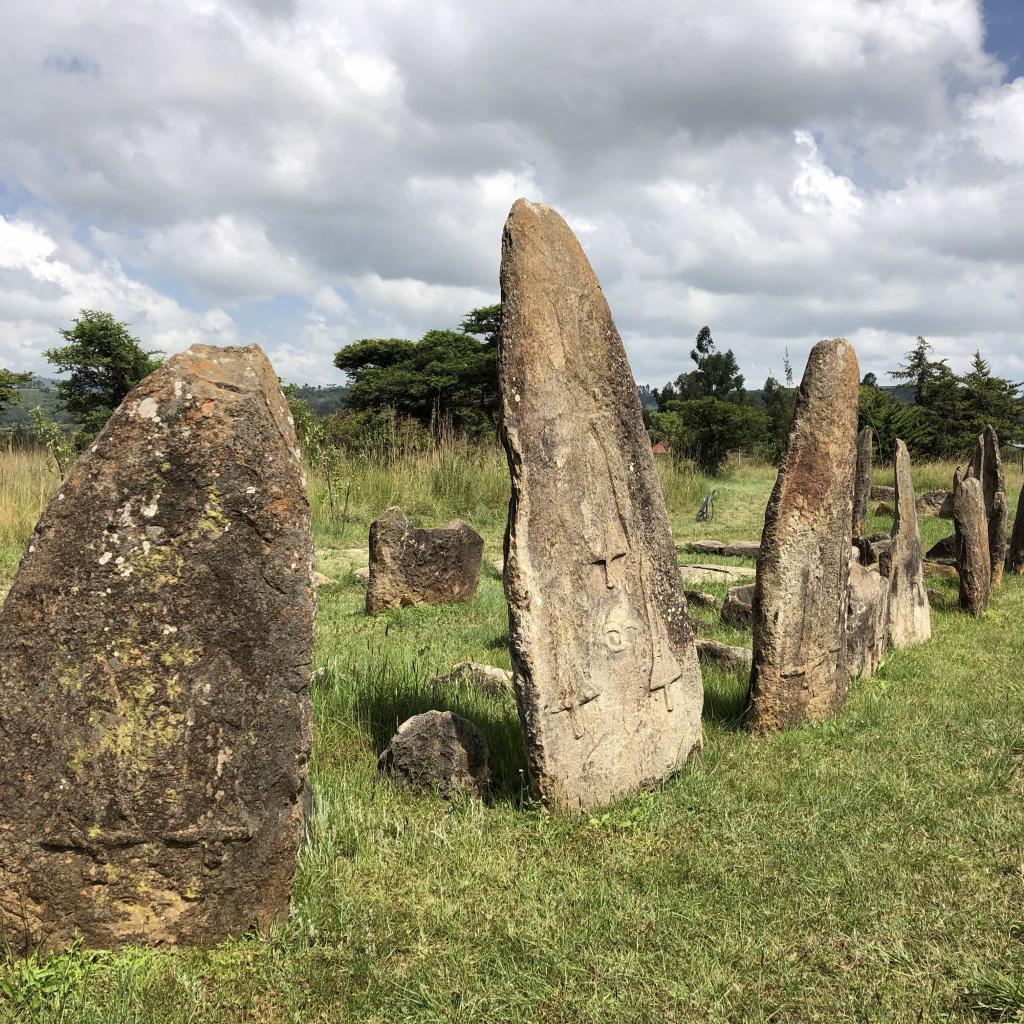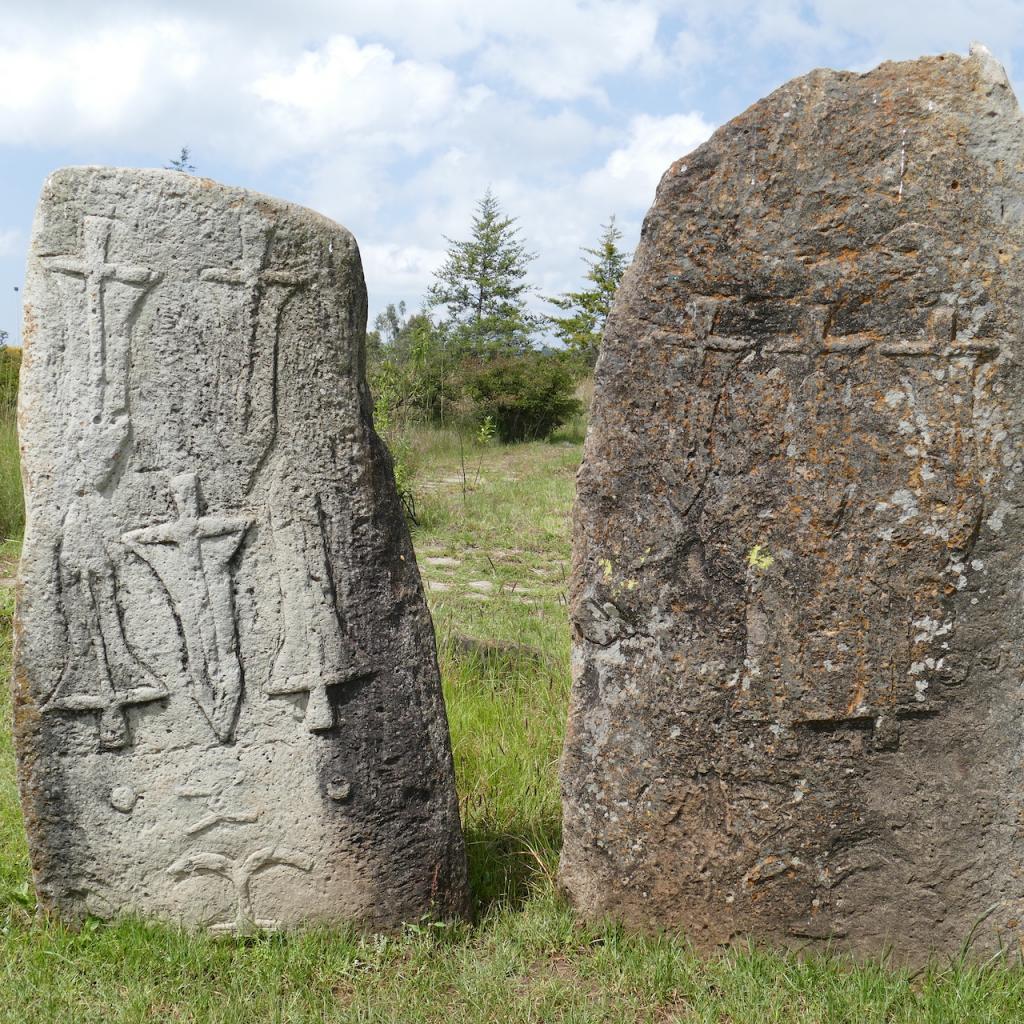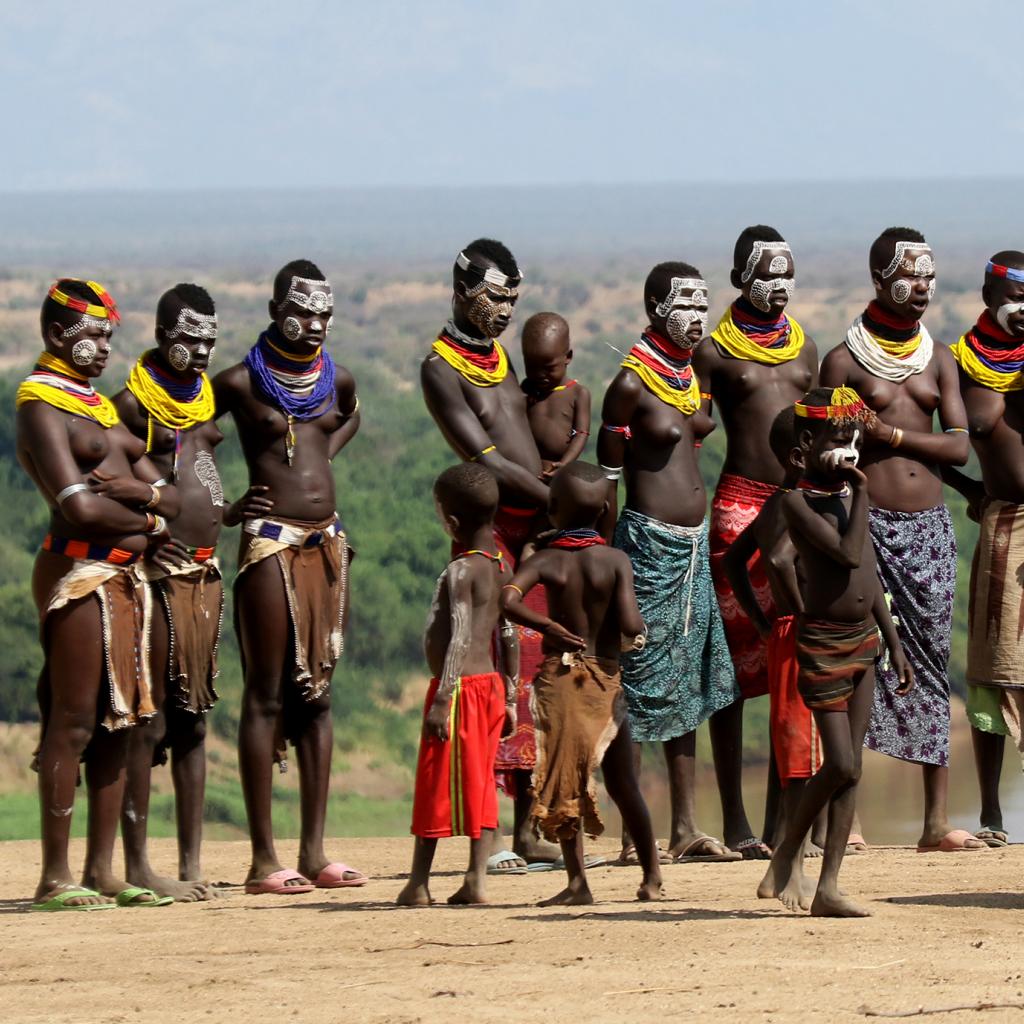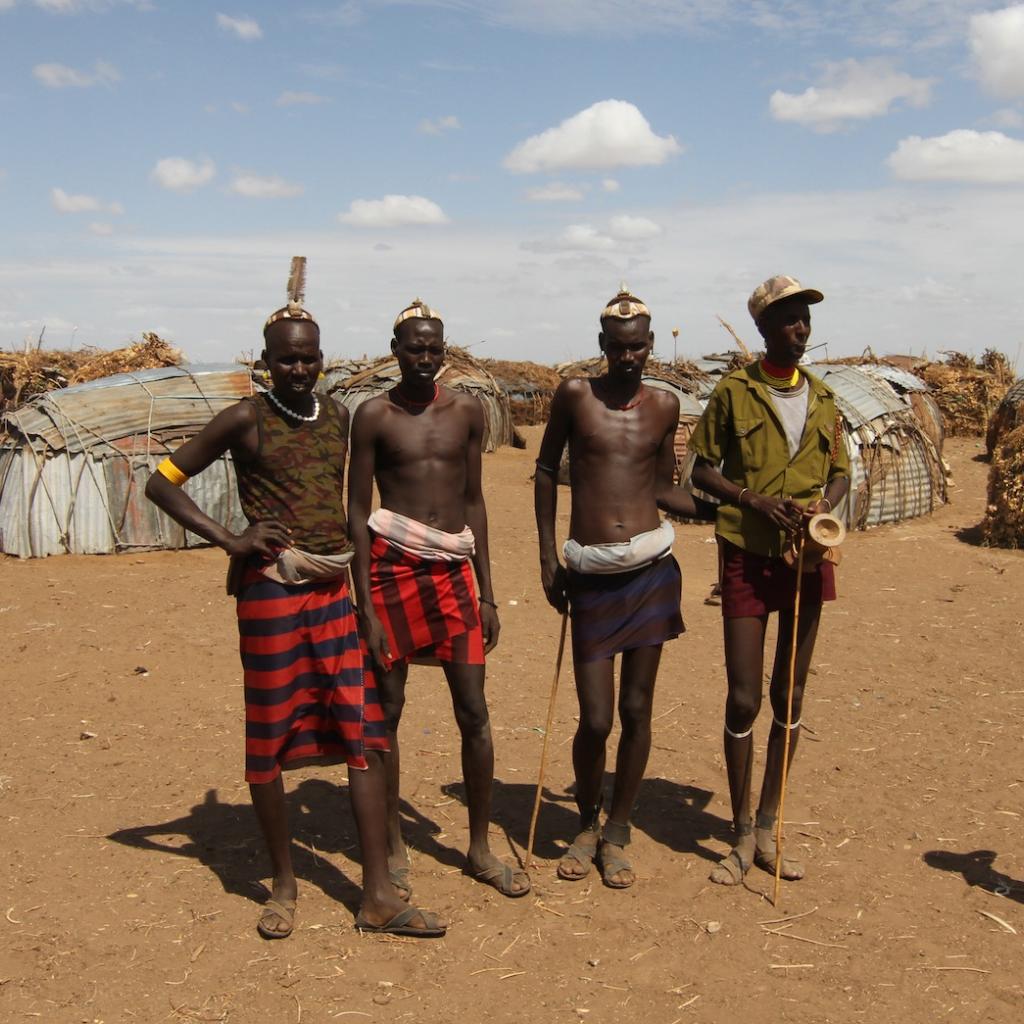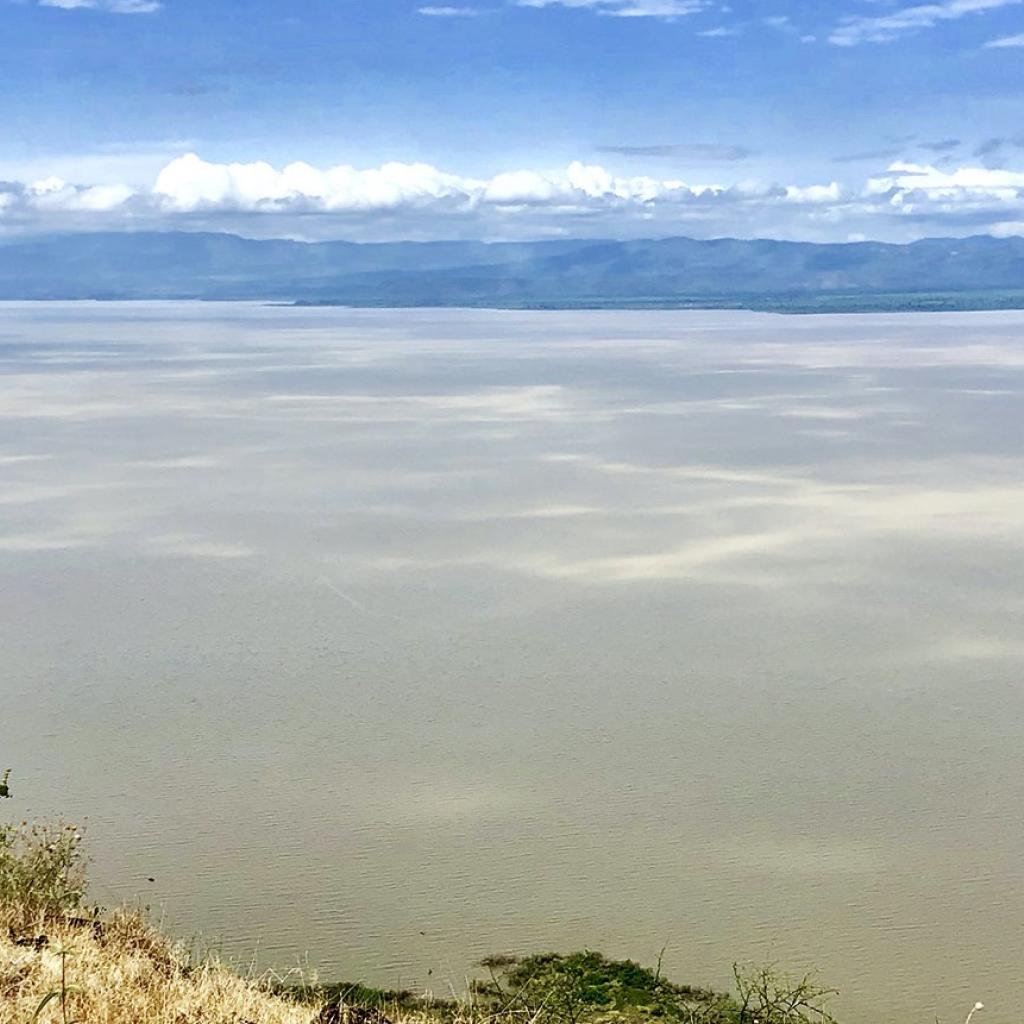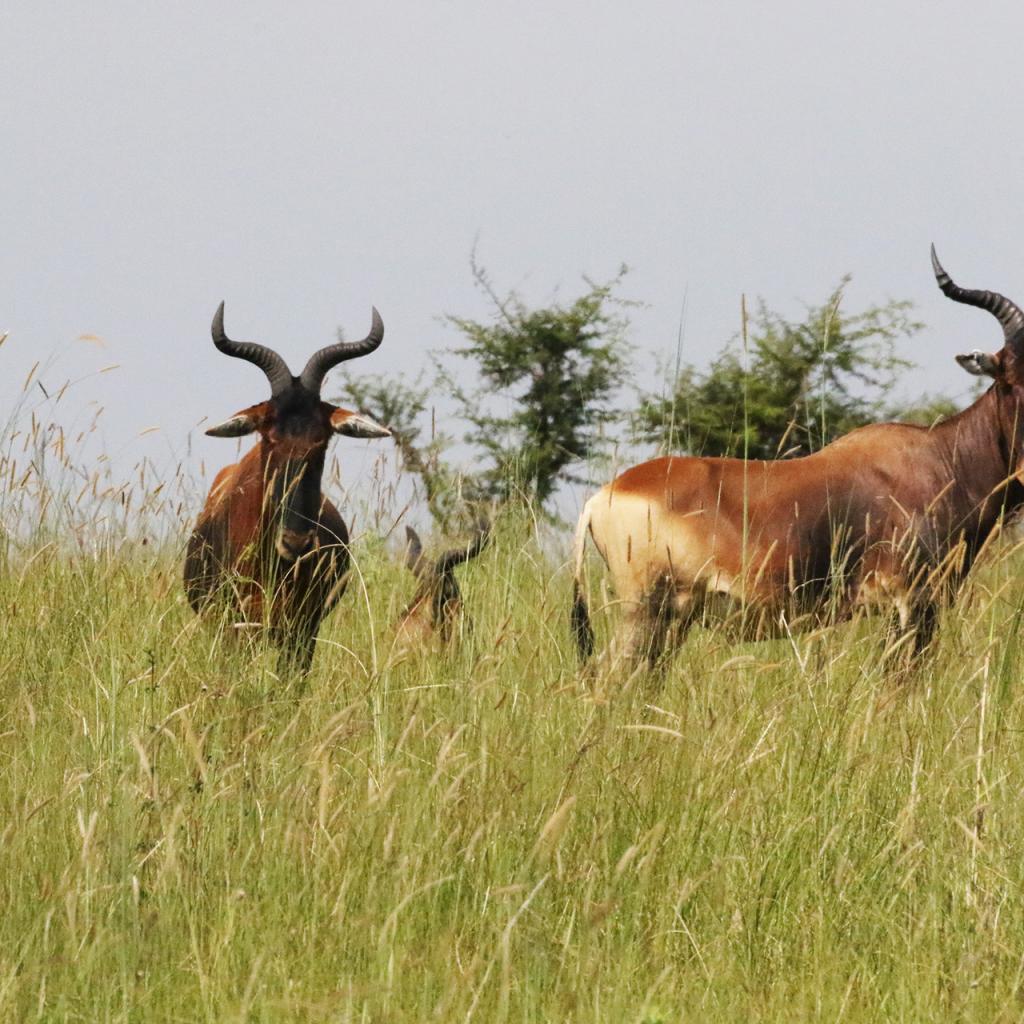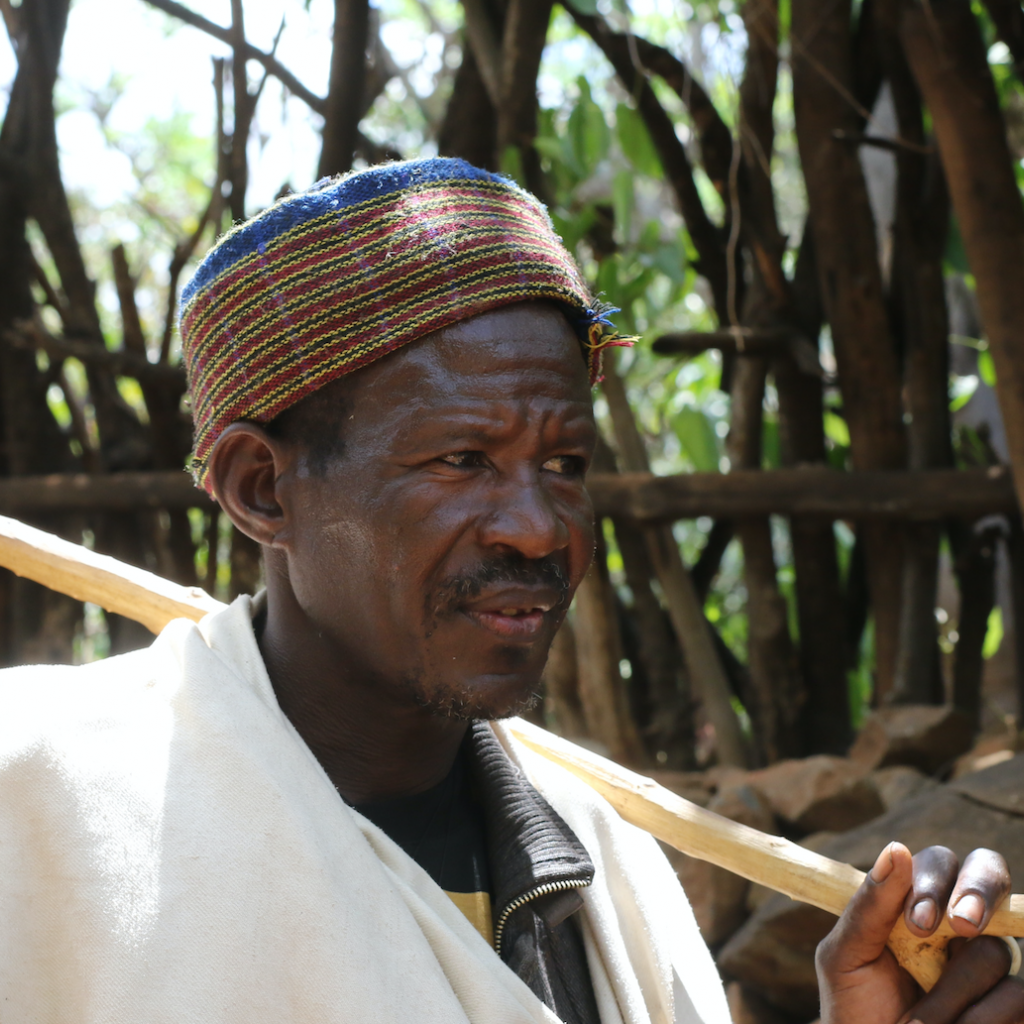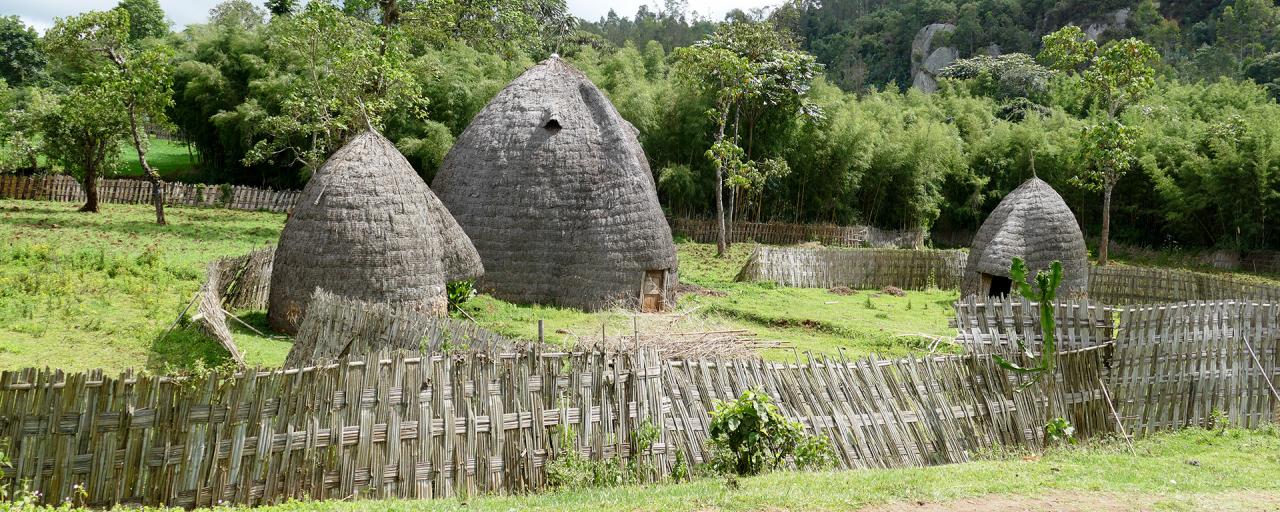
Dorze Village - Photo Credits: Romina Facchi
The Dorze people in Ethiopia
On the highlands that dominate Lake Abaya, in Ethiopia, is the territory of the Dorze, a population of very skilled farmers and weavers, famous for their unusual-looking huts.
The Dorze territory is located at over 2,000 meters above sea level and is characterized by a cool climate, with even very cold nights; often their territory is enveloped by the clouds that form at this altitude.
The main feature of the Dorze is their ability to build huge huts that resemble a beehive, while their shape reminds the one of an elephant's head.
The huts of the Dorze measure up to 12 meters in height, are made with a very resistant bamboo structure and covered with grass and leaves of enset, or false banana, finely intertwined.
These huge huts have a central structure that has the shape of a large dome, which has no supporting poles inside and is divided into different rooms, each of which has a specific function of use; the entrance to the hut, a sort of antechamber, looks like a big nose, above which there are two small ventilation windows that resemble two eyes.
The Dorze huts, in addition to being large and skilfully built, also present some interesting and curious aspects to our eyes.
In fact, the Dorze tell us that the base of their huts is usually attacked by termites that feed on the entwined enset leaves, when this event occurs the houses can be raised from the ground on which they are located to be transported elsewhere in the hope of saving them from termites.
Inevitably, the work of the termites still manages, over the years, to erode the base of the hut which is lowered progressively and this makes it necessary to raise the entrance door to allow access to the hut itself; the hut is used until it becomes too low and narrow to be inhabited, at which point it is abandoned and replaced with a new hut.
A Dorze hut can be used as a home for a long time, usually for about 80 years if adequate maintenance is carried out.
The Dorze huts are very large and accommodate the whole family, they have a sleeping area, an area where to light the fire, a place to keep food reserves and a small stable for animals that are used to heat the air inside the hut, a bit like in a living nativity scene.
The compound of a family generally consists of a courtyard where there is a large hut flanked by two other smaller huts and a large garden in which false banana, coffee and cotton plants grow, all surrounded by a fence made by weaving enset leaves.
The two side huts are made to house the kitchen and the honeymoon suite, actually more than to celebrate the honeymoon the married couple lives in this small hut for three months, which is the period necessary to build the main hut.
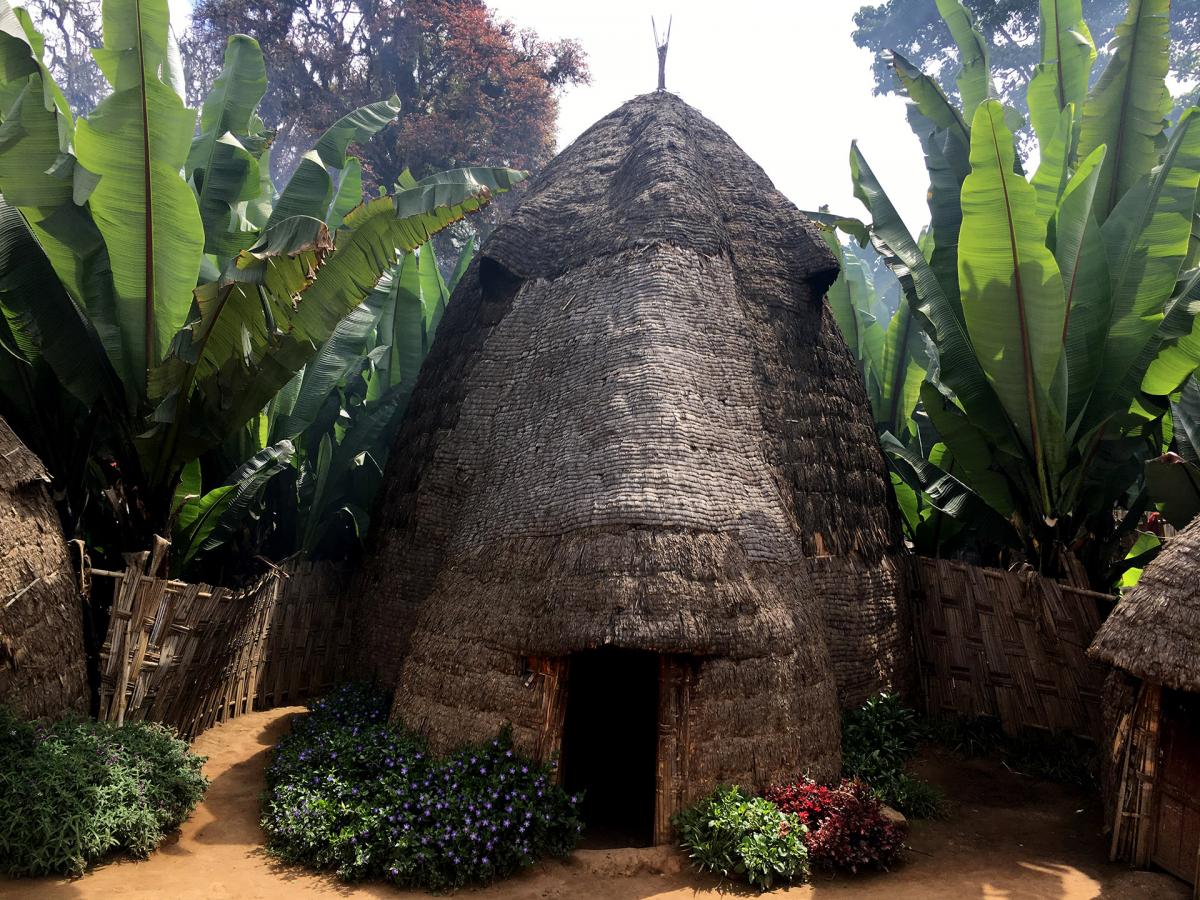
The cultivated garden is also the place where the main activities of the family take place, the women work the leaves of the enset to obtain a precious juice, collect and spin the cotton while the men weave the banana leaves making very beautiful and colored fabrics.
Almost all the Dorze are Coptic Christians, while their ancient beliefs and traditions have almost completely disappeared; the Dorze celebrate the Coptic Christian holidays which are now an integral part of their tradition.
Among the religious holidays Meskal is among the most heartfelt, the word meskal actually means cross and the feast commemorates the finding of the cross on which Jesus was crucified.
The dates of our trip to Ethiopia coincided precisely with the celebration of Meskal, or Meskel, and we chose to participate in the celebrations of this important appointment in the religious life of the Ethiopian people at a Dorze village and it was a unique and difficult experience to to describe.
The party involved the entire village and lasted a whole day; there are celebrations, masses, blessings, dances, banquets and a large bonfire at sunset, which is the culmination of the celebrations.
For the occasion, those who have moved to Addis Abeba or other Ethiopian cities also return to their village of origin; celebrating this holiday with the family is very important even if it takes several hours and kilometers of travel to do so.
During the celebration of this holiday, but also during the rest of the year, visitors are welcome.
The Dorze are a very hospitable population: when they receive guests they amicably share the strong Ethiopian coffee, which is prepared following the traditional coffee ceremony in which it is very interesting to participate, they often offer a grappa, decidedly very strong, that is distilled from the enset to which honey and garlic are added, finally a kind of wraps, prepared with a flour also obtained from the enset, accompanied by raw honey.
